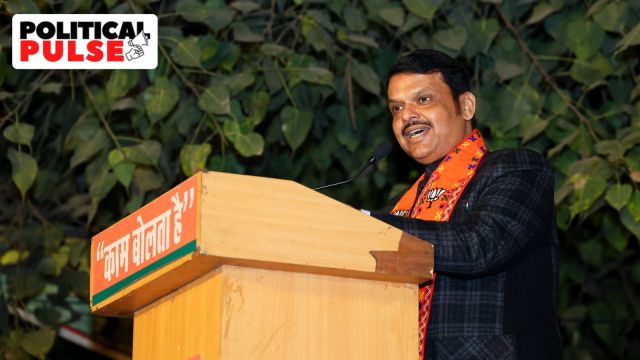Why Maharashtra soyabean farmers are facing a crisis despite Mahayuti’s procurement claims
Due to delayed procurement and inadequate number of registration centres, most soyabean farmers have been forced to sell their produce at lower prices
 Chief Minister Devendra Fadnavis had written to the Centre to seek extension of soyabean procurement from January 12 to January 31 to cover more farmers. (@Dev_Fadnavis/X)
Chief Minister Devendra Fadnavis had written to the Centre to seek extension of soyabean procurement from January 12 to January 31 to cover more farmers. (@Dev_Fadnavis/X)By the last week of January, the Mahayuti-led Maharashtra government has procured 7.81 lakh metric tonne soyabean from 3.70 lakh farmers, even as 7.65 lakh soyabean farmers were registered for the purpose at procurement centres across the state.
Maharashtra has thus emerged as the leading player in terms of soyabean procurement among the six major states cultivating the crop, including Gujarat, Karnataka, Madhya Pradesh, Telangana and Rajasthan, according to Maharashtra marketing minister Jaikumar Rawal.
Rawal said, “Through NAFED (National Agricultural Cooperative Marketing Federation) and NCCF (National Cooperative Consumers’ Federation) the registration of farmers was carried out from October 2024. There was a total of 562 procurement centres across the state. Of 7, 64,731 farmers enrolled, the procurement of 7,81,447 metric tonne of soyabean was done from 3,69,114 farmers in the state.”
Maharashtra is “way ahead” in soyabean procurement at minimum support price (MSP) as compared to other five states, Rawal said. The total soyabean procured in all the six states this season was 18.68 metric tonnes, of which Maharashtra accounted for 41.8%, he noted.
However, this still seems to be a case of “too little, too late”. A senior agriculture department official admitted that most of the farmers’ crops could not be procured by the government at MSP. “The small and marginal farmers who constitute 75% of the soybean cultivators have no infrastructure to store their produce. From the field they bring their crops to the APMC (Agriculture Produce Market Committee) mandis. They are thus left at traders’ mercy to accept the prevailing rates that the latter determine,” he said.
A cash crop, soyabean is mainly grown in the backward regions of Marathwada and Vidarbha. In September 2024, the area under soyabean cultivation in the state stood at 50.52 hectares as compared to 50.72 lakh hectares in the corresponding period in 2023.
After being harvested in November 2024, soyabean was brought by farmers to the APMCs, where the crop got an average price of Rs 3500-Rs 4500 per quintal – much below its MSP of Rs 4,892 per quintal. A majority of small farmers sold their produce at the APMC mandis in their respective talukas across the state at lower prices. The soyabean auctioned at the Wardha, Yavatmal and Latur APMCs was between Rs 3,500 and Rs 4,500.
Experts point out that because of delayed procurement and inadequate number of registration centres, most of the soyabean farmers, especially small and marginal ones, were left with barely any option other than selling their produce at lower rates.
In November, the Yavatmal APMC saw thousands of small farmers settling for lower rates for their soyabean. A farmer from Yavatmal’s Paur village, Sandeep Brahmankar said: “We had to sell soyabean at Rs 4,073 per quintal to recover our expenditure. We need money in hand. We are also not sure about when our registration happens and when our turn will come.” While being upset for not getting MSP for his crop, he said, “We also desperately need money and so holding our stocks would lead to further losses.”
What has added to Brahmankar’s woes is a shortage of farm labourers leading to higher wages for those hired for post-harvest work. “It worked out to Rs 15,000-Rs 20,000 per acre on an average,” he said.
A farmer leader Vijay Jawandhia said, “Even if the government were to procure soyabean from all 7.64 lakh farmers registered, it would still be just a small section of state soyabean farmers who number over 30 lakhs. Unless the state-Centre put a mechanism making MSP mandatory for all crops including soybean in government as well as private markets, farmers will not get any relief.”
The state administration would have to intervene to ensure traders come forwards at private markets and pay MSP rates to farmers, Jawandhia said. “The primary reason why farmers prefer APMCs despite lower rates is because they cannot afford godown rents for storing their produce besides the transportation cost. The waiting period is financially unfeasible for them.”
A senior APMC official said, “About 75% of farmers bring their crops to APMCs in their respective areas. They prefer selling the crop to traders (even below MSP) as they get money immediately,” adding that only about 20-25% farmers, especially big farmers, can afford to keep their stocks on hold and wait for their turn at the procurement centres.
Recently, Chief Minister Devendra Fadnavis had written to the Centre to seek extension of soyabean procurement from January 12 to January 31 to cover more farmers, which was accepted by the latter. Fadnavis has also directed the state marketing department to start preparations for “smooth procurement” of next kharif season crops.
The soyabean prices had crashed in the run-up to the November 2024 Maharashtra Assembly polls. However, despite widespread distress among a large section of the soyabean farmers who had to sell their crops below MSP, the incumbent BJP-led Mahayuti won by a landslide, bagging 230 of 288 seats. The BJP alone won 132 seats.
One of the key reasons for the Mahayuti’s triumph was its populist scheme Ladki Bahin Yojna providing women a monthly allowance of Rs 1,500. The Mahayuti also promised Rs 5,000 per hectares assistance to farmers (up to two hectares) to compensate for losses incurred due to rain and hailstorm.



- 01
- 02
- 03
- 04
- 05




























